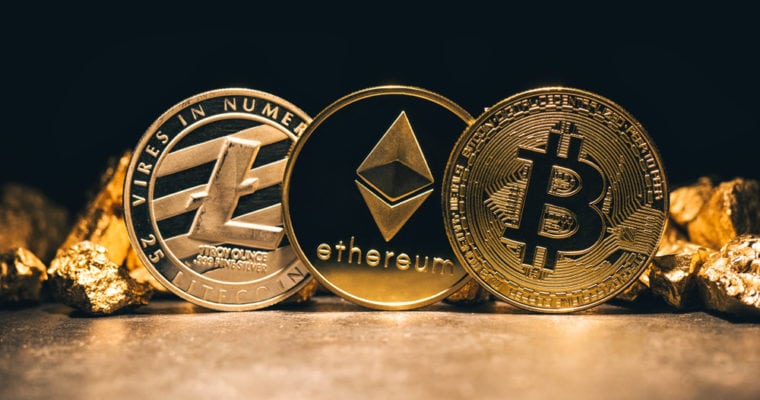Introduction
Contents
In the ever-evolving landscape of finance and technology, the term “cryptocurrency” has become more than just a buzzword. It represents a groundbreaking shift in the way we perceive and engage with traditional currency systems. Cryptocurrency, at its core, is a form of digital or virtual currency that employs cryptography for secure financial transactions. In this article, we’ll delve into the fundamental concepts behind cryptocurrencies and explore how they work, sans the jargon.
Understanding Cryptocurrency
Cryptocurrency operates on a decentralized technology called blockchain. Unlike conventional currencies that rely on central authorities like banks or governments, cryptocurrencies use a peer-to-peer network of computers to validate and record transactions. This decentralized nature enhances security and eliminates the need for intermediaries.
Key Components
- Blockchain: At the heart of every cryptocurrency is a blockchain – a distributed ledger that records all transactions across a network of computers. Each transaction is grouped into a “block” and added to the chain in a chronological order, creating a transparent and unalterable history.
- Cryptography: Cryptocurrencies leverage cryptographic techniques to secure transactions and control the creation of new units. Public and private keys, cryptographic hashes, and digital signatures play crucial roles in ensuring the integrity and confidentiality of the data.
How Cryptocurrencies Work

- Mining: Cryptocurrencies often rely on a process called mining to validate transactions and introduce new coins into circulation. Miners use powerful computers to solve complex mathematical problems, adding new blocks to the blockchain. In return, they are rewarded with newly minted cryptocurrency coins.
- Decentralization: The absence of a central authority ensures that no single entity has control over the entire network. This decentralization not only enhances security but also fosters a trustless system, where participants can transact directly without intermediaries.
- Wallets: Cryptocurrency wallets are digital tools that enable users to store and manage their digital assets. Wallets can be software-based (online or offline) or hardware devices, providing a secure way to access and control one’s funds.
Popular Cryptocurrencies

Bitcoin, created in 2009, is the first and most well-known cryptocurrency. Others, such as Ethereum, Ripple, and Litecoin, have since emerged, each with its unique features and use cases.
Challenges and Future Outlook
Despite the widespread adoption of cryptocurrencies, challenges like regulatory uncertainties, security concerns, and market volatility persist. However, the potential for blockchain technology to revolutionize various industries, from finance to healthcare, paints a promising future for the digital currency landscape.
What are the 4 types of cryptocurrency?

- Bitcoin (BTC): Think of Bitcoin as the pioneer, the trailblazer of cryptocurrencies. Created in 2009 by an unknown person or group using the pseudonym Satoshi Nakamoto, Bitcoin is like digital gold. It operates on a decentralized network, using blockchain technology to secure and record transactions. Bitcoin is often viewed as a store of value and a medium of exchange, inspiring the creation of many other cryptocurrencies.
- Ethereum (ETH): If Bitcoin is digital gold, then Ethereum is like a digital supercomputer. Launched in 2015 by Vitalik Buterin, Ethereum introduced the concept of smart contracts. These are self-executing contracts with the terms of the agreement directly written into code. Ethereum’s blockchain enables the development of decentralized applications (DApps), making it a platform for various blockchain-based projects.
- Ripple (XRP): Ripple stands out with a focus on fast and low-cost cross-border payments. Created in 2012, Ripple’s primary goal is to facilitate secure and swift international money transfers. Unlike Bitcoin and Ethereum, Ripple doesn’t rely on mining; instead, a unique consensus mechanism is employed. This feature makes Ripple a favorite among banks and financial institutions seeking efficient and cost-effective payment solutions.
- Litecoin (LTC): Often considered as the “silver to Bitcoin’s gold,” Litecoin emerged in 2011, created by Charlie Lee, a former Google engineer. It shares many similarities with Bitcoin but introduces some technical differences. Litecoin offers faster block generation times and a different hashing algorithm, making it a more accessible and efficient option for everyday transactions.
These four cryptocurrencies showcase the diversity within the crypto space. While Bitcoin remains a popular choice for long-term investment, Ethereum opens doors to decentralized applications. Ripple targets the world of cross-border transactions, and Litecoin offers a quicker and lighter alternative for everyday use. Keep in mind that the crypto world is dynamic, and new types of cryptocurrencies continue to emerge, each with its unique features and purposes.
Final TakeAways:
In wrapping up, the world of cryptocurrencies is like a vast digital frontier with options catering to different needs. We have Bitcoin, the OG that’s seen as digital gold and a way to exchange value without relying on traditional systems. Ethereum brings smart contracts and opens doors for decentralized applications, adding a layer of innovation. Ripple zooms in on making international transactions quicker and cheaper, while Litecoin offers a speedy and accessible option for everyday use.
Remember, this crypto journey is an ever-changing adventure. Each cryptocurrency brings something unique to the table, and the technology behind them keeps evolving. Whether you’re an investor, tech enthusiast, or just curious, staying in the loop about these digital currencies ensures you’re ready for the exciting twists and turns this digital financial landscape has in store. So, buckle up for the ride, because the world of cryptocurrencies is an ongoing story of exploration, innovation, and constant change.
Recommended reading:
Top 5 Highest Currencies In The World In 2022
How To Make 1Lac Per Day From The Share Market?

